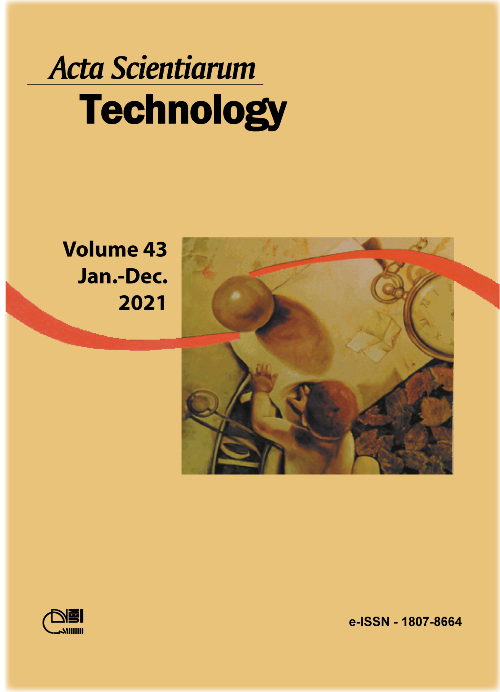Nano-silica added to Portland cement
DOI:
https://doi.org/10.4025/actascitechnol.v43i1.51699Keywords:
particle size distribution; specific surface area; viscosity; compressive strength; microstructure.Abstract
For a controlled particle size distribution, nano-silica was added to three different cements. The chemical and mineralogical compositions of the cements were characterized by fluorescence and X-ray diffraction. The granulometric distributions of cements and nano-silicas were obtained by laser granulometry and dynamic lightning scattering. The specific surface area of the raw materials was determined by gas adsorption. The effect of nano-silica and type of cement on rheological behavior was evaluated by rotational rheometry. The mechanical performance was investigated through the compression strength. The microstructural analysis was performed by scanning electron microscopy. The water demand and the consumption of dispersant increases according to the nano-silica content. The reduction in the inter-particle separation, and the agglomeration of nano-silica led to an increase in the viscosity of the suspension. The mechanical performance was directly affected by the specific surface area of the cements. Microstructural analysis showed that nano-silica changed from a layered adsorbed structure, to a porous or agglomerated structure.
Downloads
Downloads
Published
How to Cite
Issue
Section
License
DECLARATION OF ORIGINALITY AND COPYRIGHTS
I Declare that current article is original and has not been submitted for publication, in part or in whole, to any other national or international journal.
The copyrights belong exclusively to the authors. Published content is licensed under Creative Commons Attribution 4.0 (CC BY 4.0) guidelines, which allows sharing (copy and distribution of the material in any medium or format) and adaptation (remix, transform, and build upon the material) for any purpose, even commercially, under the terms of attribution.
Read this link for further information on how to use CC BY 4.0 properly.











8.png)




